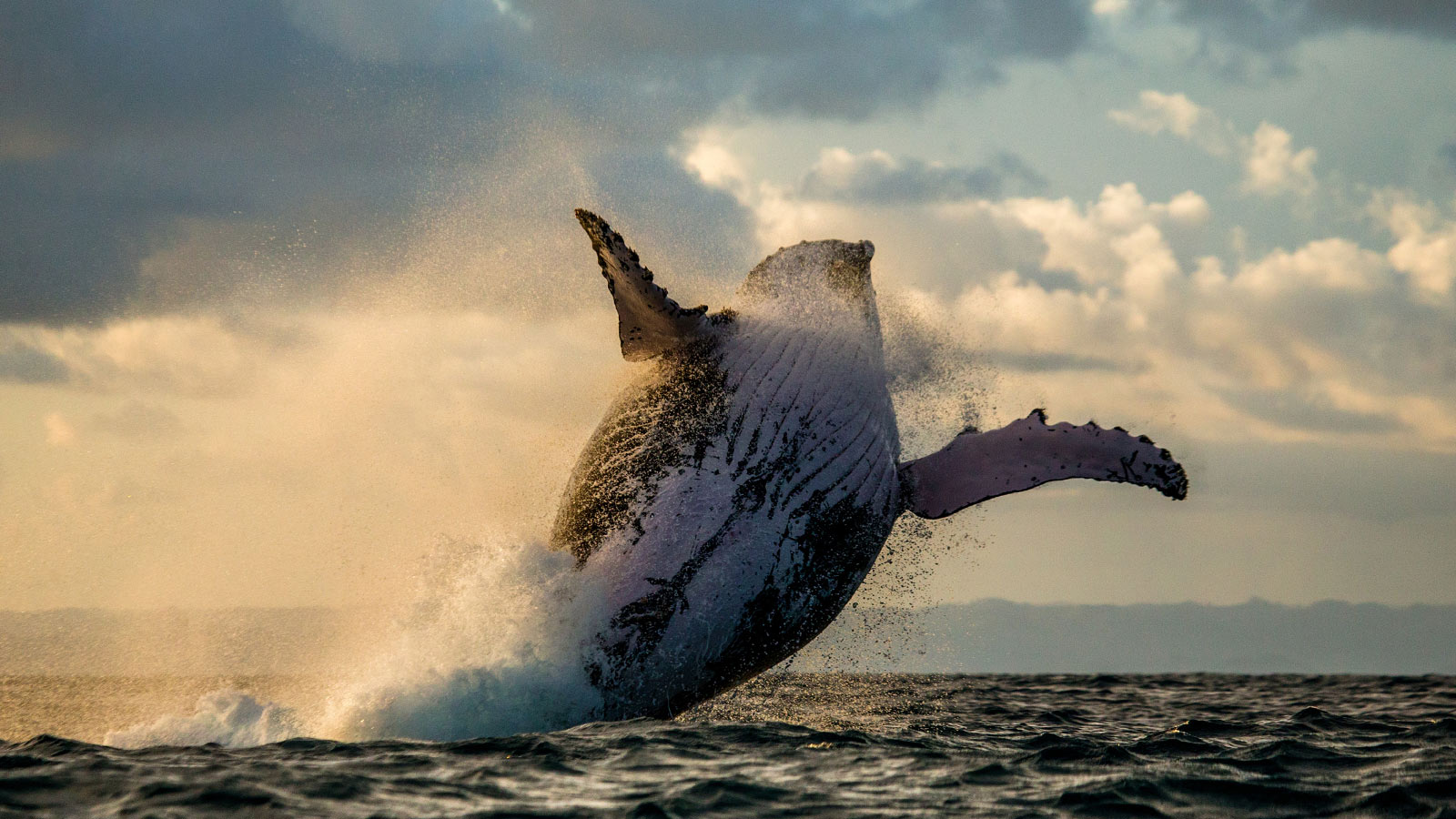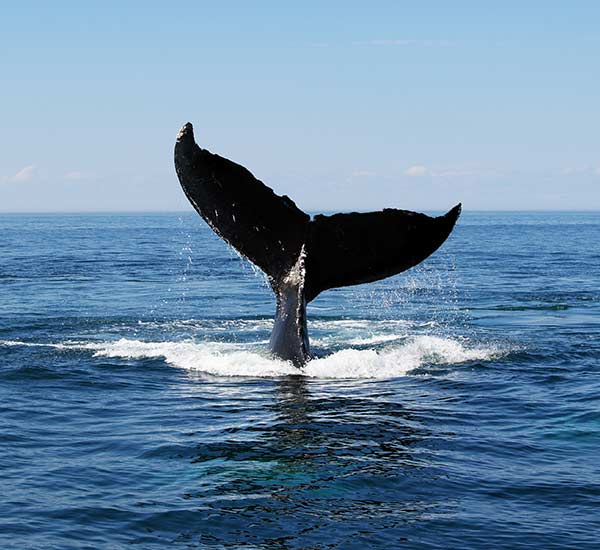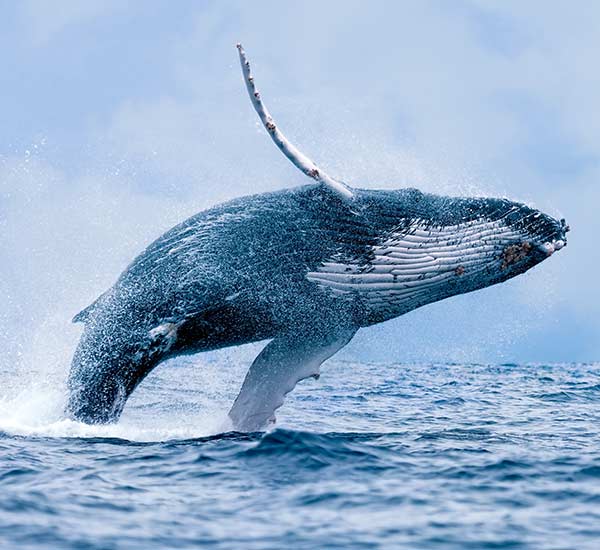No binoculars – no worries! The annual whale migration up the Pacific Coast has begun. The Central Coast boasts several fantastic headlands and vantage points to view this spectacular annual whale display.
Spoilt for viewing choice
The Central Coast is spoilt for choice when it comes to the best places to view the winter whale migration. The majority are easily accessible vantage points offering scenic views and easy viewing of the whales on their annual migration. Don’t forget the stunning ocean views from each of these Central Coast locations.
When can I see whales?
The whale migration along the NSW coastline runs from May until November. The whale population of the southern hemisphere spends the summer months feeding in Antarctica. Towards the end of the Autumn months, they begin their migration north to the warmer waters of the Pacific to breed and calve.
Why do they head north?
Whale calves are born without the protective fat layer, known as blubber, to keep the calves insulated. The calves would die if they were born in the freezing water temperatures of the Antarctic. In the spring they return south with much fatter calves in tow.
Best spots to whale watch
1) Crackneck Lookout, (Wyrrabalong National Park).
You can drive right to the top. Limited parking is available, and it can be very busy on sunny weekends. Several picnic tables and benches are available. Pack a picnic and enjoy the sunshine.
2) The Skillion, Terrigal.
As you drive into Terrigal, the Skillion is easily recognisable and is a prominent landmark. You can drive and park easily at the base of the Skillion, however, it is a steep walk to the top. This has been made easier in recent years with the concrete stairway and path added. Your effort will be rewarded with your uninterrupted ocean view from the top.
3) Norah Head Lighthouse.
Norah Head Lighthouse is beautiful to visit in any season. There is designated parking with a pathway to the Lighthouse. There are ample spots to sit and scan for the passing whales. The people of Norah Head will this year celebrate the 13th Annual Whale Dreamers Festival at Norah Head Lighthouse on Sunday 1 July 2018. This event fundraises for the conservation of and research projects about whales.
Why not get the best view of the whales right from the top and book a lighthouse tour to walk the 96 stairs to the top!
4) Bateau Bay Beach Viewing Area.
Recently renovated to include a sandstone viewing platform over Bateau Bay beach this area is perfect for taking in the sights. While it is not the highest vantage point, the newly landscaped sandstone platform provides a clear viewing point out over Bateau Bay. Plenty of parking is available, and picnic tables and amenities are close by.
Feeling adventurous. Park the car here and take the bushwalk to the top of Crackneck for the ultimate whale watching location. It is not a difficult bushwalk however the surface is uneven, and it is all uphill.
5) Copacabana Beach – Whale Watching Platform – Captain Cook Lookout.
At the Southern end of the coast this purpose built platform has views all the way south to Palm Beach; perfect for watching the annual whale migration.
What whales can you see on the Central Coast?
Humpback Whales and Southern Right whales are frequently sighted along the Central Coast. Other varieties may include Minke whales and on the rare occasion – Orcas.
What to look out for when whale spotting
Apart from a glorious breach the easiest way to spot whales it to watch for a ‘blow’. Each variety of whale has a different blow which enthusiasts can use to identify what species of whale.
Just as sharks and dolphins dorsal fins make them easy to distinguish so too does a whale’s dorsal fin. Each species has a distinctive dorsal fin.
Breaching and splashing is by far the easiest and perhaps the most visually spectacular way to spot a whale as they can propel up to two-thirds of their body mass out of the water. Luckily for the Central Coast, it seems that Humpbacks appear to enjoy breaching more frequently than any other whale.Whales may breach to attract other whales, fend off other males or even communicate. There is still no known reason why.
Other identifiable whale moves include; spy hopping, fin and tail slapping. It doesn’t matter which move they do – the splash is unmissable!
 Did you know?
Did you know?
The Darkinjung people of the Central Coast regard the whale as an important totem that symbolises kinship.
There are at least 45 different whale, dolphin and porpoise species found in Australian waters.
Humpback Whales and Southern Right whales are the most commonly sighted whales along the coastline.
5,000km is the average migration for Humpback whales!
Whales never sleep. Coming to the surface to breath is a voluntary movement. They have to purposefully come to the surface to breathe. Whales only ever doze so that one-half of their brain is functioning to concentrate on their breathing.
Finding a perfect spot on the Central Coast to whale watch is not difficult. You are spoilt for choice with the variety of locations. You may find some are better suited to young children and the elderly than others as they may require less walking than others.
Spotting whales cannot be guaranteed! It is easier to spot them on calmer days with fewer whitecaps on the ocean. Early morning as the sun rises it is also easier to spot the blows on the water surface. No matter what time of day or which location you spot whales, it is just as exciting each time.
Whether you are local or travelling to the Central Coast why not make a whale watching day of it? Head in for all day breakfast at The Roasted Berry at Mingara before heading out to whale watch or make a morning of it and catch up for lunch at Indigo – Eats, Treats & Bar afterwards.


